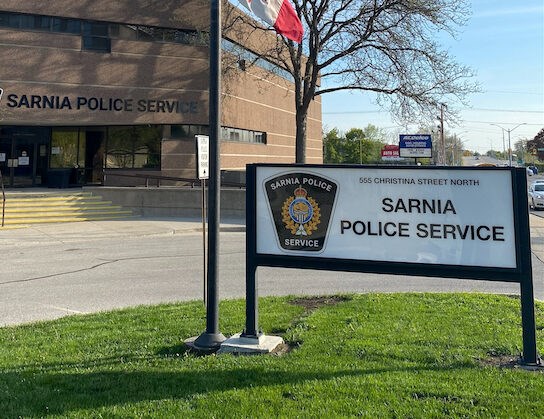Sarnia Police officers reported use of force in less than 1% of interactions with the public last year, despite a concerning rise in the severity of service calls, officials say.
Out of more than 32,000 calls for service in 2023, 75 incidences — or 0.23% — met the threshold of a use of force encounter, Dep. Police Chief Julie Craddock explained.
“The vast majority of [police interactions] are resolved without any type of use of force requirements,” Craddock told the Sarnia Police Services board, Thursday. “But we also need to recognize that there are times when those interactions are dynamic and more than one use of force option may be required to control and resolve the situation.”
Officers are required to complete and submit an electronic use of force report anytime they have ‘displayed or applied reportable force or utilized a force option as defined by regulation.’ That includes: drawing, pointing or discharging a firearm or conducted energy weapon (CEW, or taser); or using force on another person, that results in an injury requiring medical attention.
“A key point to remember is that the police response with force is driven by the behaviour of the subject,” Chief Derek Davis explained. “What that individual presents in that moment in time, given the circumstances that are known at that time — not in hindsight…it’s not arbitrary in that sense.”
Overall, the use of force encounters reported by Sarnia Police in 2023 involved 89 individual subjects — more than half of whom were armed with a weapon (47), whether within reach, in their hands, or concealed on them. Of the use of force reports submitted in 2022, 19 subjects were armed with a weapon. The most common weapons encountered were edged weapons and firearms.
“The level of firearms and level of violence that is here is a new experience for me,” Chief Derek Davis told the board. “Our members are doing very well as best they can to deal with some of these offenders and the dangers they pose.”
Of the 75 Use of Force Reports in 2023, 27 were the result of officers who drew their firearm and pointed it at a subject, while, in two incidences, the handgun was drawn but not pointed.
Meanwhile, tasers, or CEWs, were used a total of 44 times and represented 58% of all use of force reports, but only discharged in nine incidents. In one incident, the officer discharged a CEW at an animal.
One report was for the application of physical control techniques being used on a subject, police added, and overall, a total of two officers and one subject received injuries during use of force incidents. All injuries reported were minor in nature.
Craddock pointed to a shift in police training to focus on de-escalation and conflict prevention, including the new Ontario Public-Police Interactions Training Aid introduced in 2023, approved by the Ministry of the Solicitor General to replace the 2004 Ontario Use of Force Model.
“We are successfully de-escalating a large volume of calls,” Craddock said, pointing to verbal interaction, conflict prevention and de-escalation techniques. “De-escalation was used as an alternative strategy to the application of force in 85% of occurrences.
“One of the key pieces of that is asking: ‘Is it necessary? Is it reasonable? Is it acceptable?’” she added. “And they’re trained to do that throughout every interaction that they’re having.”
Sometimes, just the presence of the officer or special units, can serve as a de-escalation tactic, Craddock added.
“When we know and have information ahead of time and can deploy MHeart teams for people in crisis; we can deploy emergency response teams (ERT) for high risk incidents…we’re actually lowering the possibility of force.”
